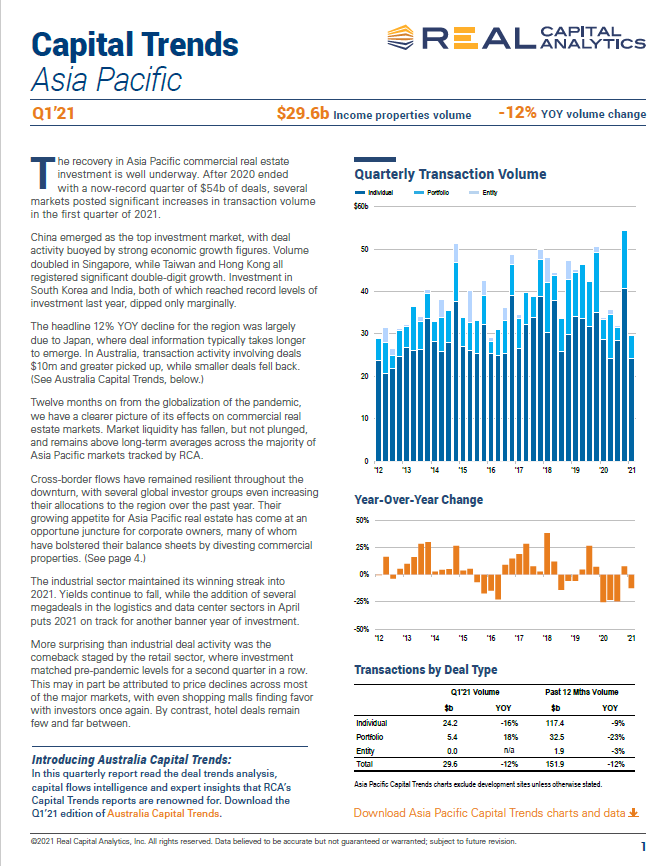The COVID-19 pandemic brought the logistics sector abruptly into the global spotlight. With increased attention on the sector, both in 2020 and in the near-term, this report focuses on key drivers for the sector, recent market performance and an outlook for the industry.
Growth drivers
Leasing Market
Outlook
新冠疫情的爆发新冠疫情的爆发给全世界造成了空前的损失 。 在亚太地区即使各国各政府采取了许多有效的经济稳定措施 但这依然导致了自大萧条以来最严重的经济衰退 亚太的几个主要经济体也经历了十多年来的首次收缩 。 不过 尽管这一场严重的危机可能仍会持续一段时间 但亚太地区长期增长的基本面并不会因此改变 。亚太地区人口众多加之 城市化进程发展空前迅速 这些都将推动中产阶级 以及 消费 周期的增长 。 因此 不动产行业将成为该地区 的一个 结构性 发展 趋势 且 将一直持续下去 同时 它也将超越 新冠疫情 所带来 的影响期 。 从 疫情 带来的不利影响得到遏制到经济进入 长期 复苏阶段 基础设施投资和 不动产 投资信托 基金 REITs 在其中发挥了重要的作用 它们见证了 亚太地区 从 新冠疫情中 复苏 并保持经济发展 的这一转变过程 。
塑造未来
投资投资基础设施 建设 仍然是政府用来刺激经济的强大 工具 。 它之所以 有 效 不仅 因为基建 领域 的合理 投入 增加了短期需求 同时 也为未来的经济增长奠定了 优良的 基础 。 国际货币基金组织预计 如果各国在未来五年内 对 基础设施 领域的投资额 增加 到占 GDP 的 约 1 的水平 则 全球 GDP 总值 可能会增长近 2 。 1此类公共投资不仅 加速经济恢复的步伐 为创造就业机会和提高就业率 带来了积极 的 动能 同时也在跨境领域产生了明显的回响 。 总体而言 通过持续的基础设施投资活动 亚太地区的经济将 更加 活跃 此领域也应该 成为 未来 经济计划中的基石用以 实现经济的可持续复苏 并推动 有益的 经济转型 。
Download the Report Read More
Highlights
1.The Appellate Court for insolvency matters, the NCLAT, in its recent landmark ruling has destroyed the idea of inter-creditor seniority amongst secured creditors in the liquidation waterfall.
2.Unlike liquidation under the Companies Act, liquidation waterfall under the insolvency Code is based on the election made by the secured creditor, between enforcement outside the code or relinquishment to the liquidation estate.
3.Sub-classification amongst secured creditors is irrelevant where the secured creditor elects to relinquish its security interest.
4.Such liquidation waterfall is likely to better the position of dissenting secured financial creditors at the resolution stage as well.
Download the Report Read More
To view full report please visit Real Capital Analytics please visit : https://www.rcanalytics.com/rca-insights/
Read More